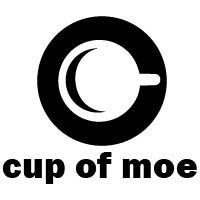We may earn money or products from the companies mentioned in this post.
CD Projekt Red’s “The Witcher 3: Wild Hunt” recently launched, and it looks beautiful. Well, on some PCs. Players have experienced significant performance issues running “The Witcher 3,” on AMD GPUs, and naturally gamers took to their favorite jousting arena: the Internet.
“The Witcher 3” makes use of GameWorks, an exclusive Nvidia technology that delivers rich details, like shadows and hair. However, since it’s propriety, the source code hasn’t been released. AMD claims, supported by many users, that GameWorks is responsible for the lackluster performance on AMD GPUs. Nvidia responded that issues were related to AMD’s poor tessellation capabilities.
Yet it seems meager performance in “The Witcher 3” isn’t relegated to AMD GPUs. Even high-end Nvidia graphics cards struggle with the incredibly demanding game. Even the minimum system requirements are rather hefty (if you’re looking to build a new system to play “The Witcher 3,” Forbes has a few nice build suggestions). According to a set of benchmark tests from HardwareLuxx, Nvidia’s beefy GeForce GTX 980 took a framerate hit with HairWorks enabled. So clearly HairWorks causes a major performance loss regardless of GPU manufacturer.
Nevertheless, Nvidia cards, despite a performance dip, managed substantially better framerates than comparable AMD graphics cards. Nvidia’s GameWorks technology can’t be optimized for AMD GPUs, which likely explains part of the huge performance issues. However the fact that Nvidia cards suffer from similar, albeit less serious, framerate drops shows clearly that HairWorks is simply really demanding, even for top-of-the-line PCs. Of the gamers I spoke with, one reported no framerate problems with an AMD R7, but several bugs. Another experienced poor performance with a GTX 970, though acknowledged it may be attributable to an underpowered CPU. The latter did note Geralt’s gorgeous hair, so at least HairWorks actually lives up to its name.
Interestingly, some experts, including PCWorld Senior Editor Brad Chacos, advocate for disabling HairWorks. Heck, even CD Projekt Red developer Marcin Momot suggested that Radeon users turn HairWorks off, though it seems that considering several benchmarking tests, even Nvidia users may wish to forego the lovely hair effects.
Now to the real question: who’s to blame? Unfortunately, it’s not that simple. AMD’s flagship R9 fell slightly short to the GTX 980, thus it’s no surprise that Nvidia GPUs performed better. According to Nvidia, the lackluster performance on AMD’s part is attributed to poor tessellation ability, an undeniable fact. While Nvidia’s better tessellation was no secret, this was not a case of intentional sabotage. AMD’s TressFX technology, comparable to GameWorks, could easily have been included, but was left out. We saw the implementation of both TressFX and GameWorks in Rockstar’s “Grand Theft Auto V,” so it’s obviously feasible. It wasn’t, and the results are clear.
Hopefully future games include both technology from AMD and Nvidia, or even a third party software that is cross-compatible. Notably, late night TV host Conan O’Brien experienced performance problems while playing “The Witcher 3,” albeit of a different nature.
This post may contain affiliate links. We are a participant in affiliate programs such as the Amazon Services LLC Associates Program, an affiliate advertising program designed to provide a means for us to earn fees by linking to Amazon.com and affiliated sites. However, all products are thoroughly tested and reviews are honest and unbiased.

